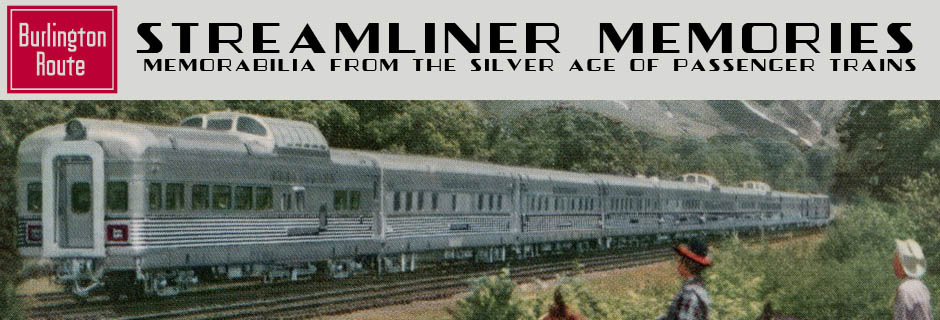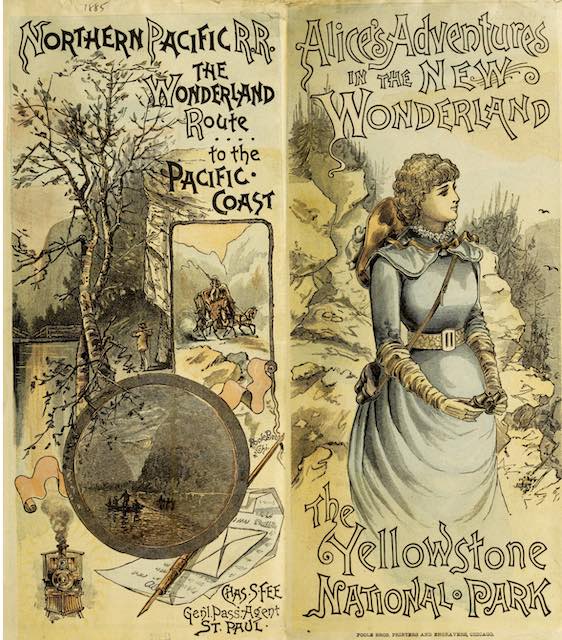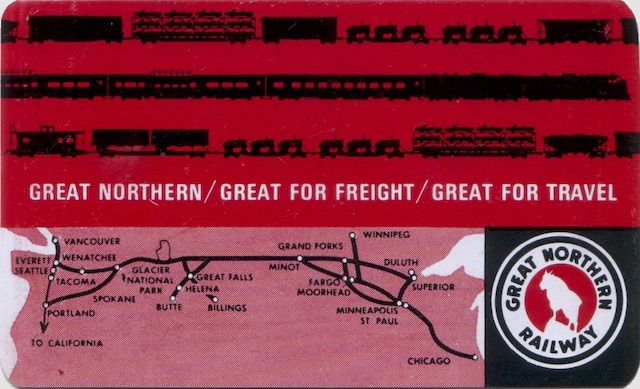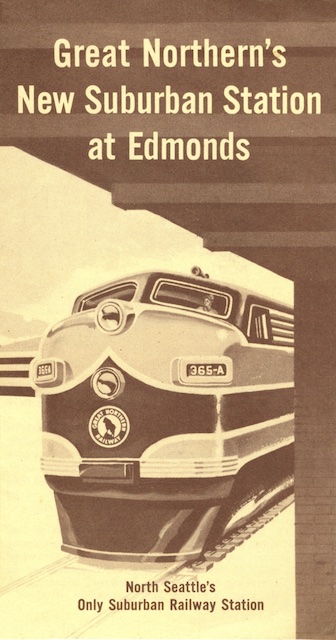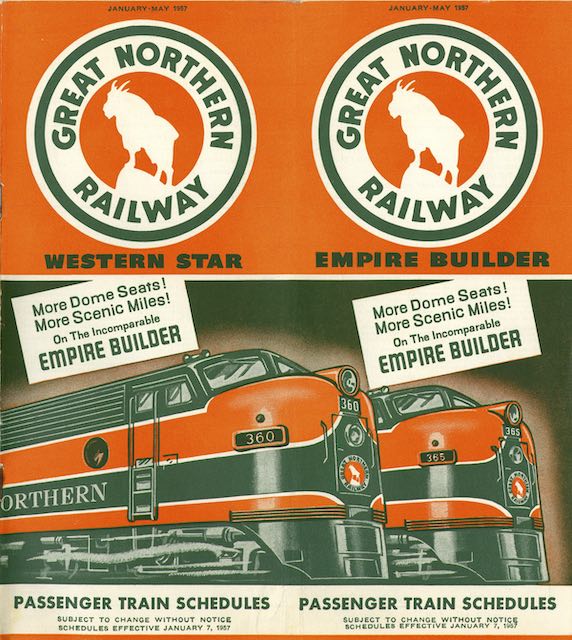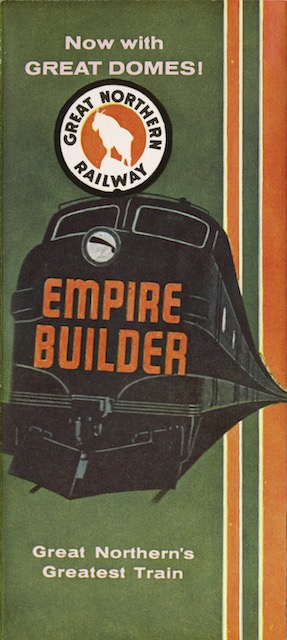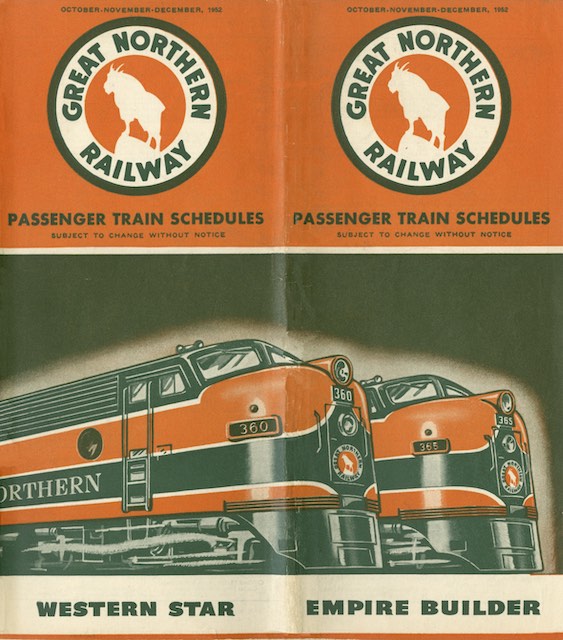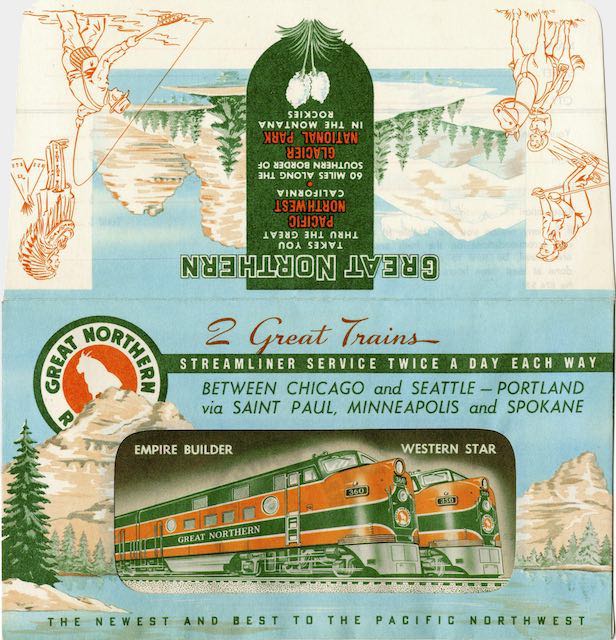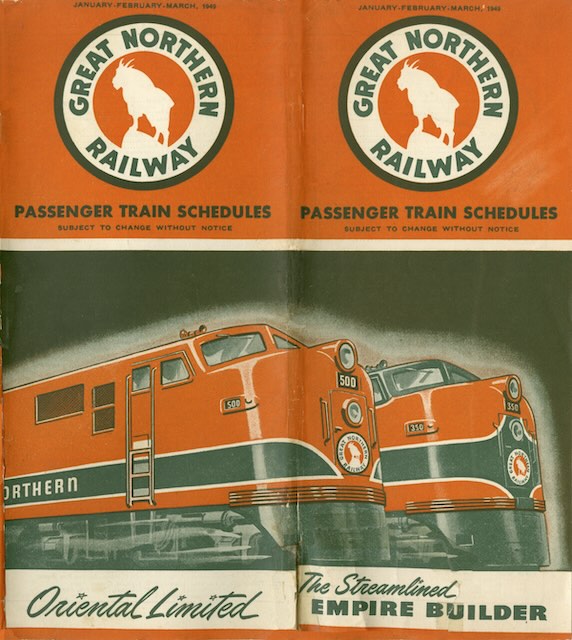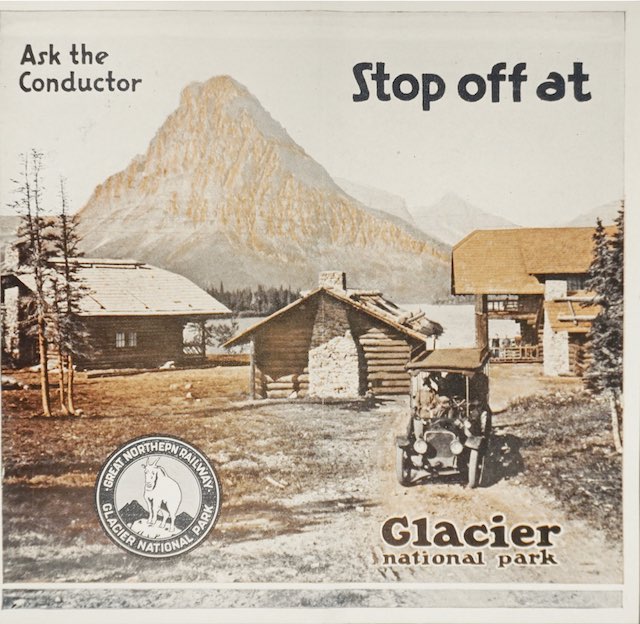“This is a world of wonders!” opens this 1885 booklet. “Beyond the Great Lakes,” it continues, “lies a region which may justly be designated the Wonderland of the World.” In saying so, this booklet is referring not to Yellowstone but to the entire Northwest, from Duluth and the Twin Cities to Portland, Tacoma, and Alaska.
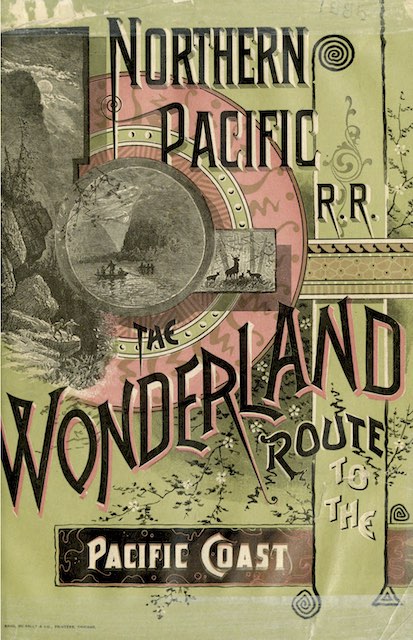 Click image to download a 25.7-MB PDF of this 68-page booklet.
Click image to download a 25.7-MB PDF of this 68-page booklet.
Rather than a fictitious letter from an imaginary character, this book is simply a travelogue. Yes, there are a dozen pages on Yellowstone, but these are preceded by 19 pages on Minnesota, the Dakotas, and eastern Montana. Eighteen more pages cover western Montana, Idaho, Oregon, Tacoma and Mount Tacoma (which is what Northern Pacific insisted on calling Mount Rainier). The booklet ended with nearly 10 pages on Alaska. Continue reading
